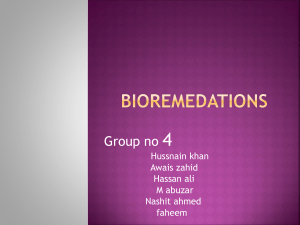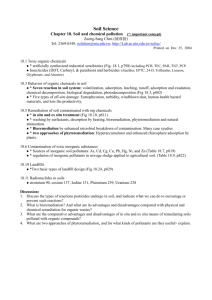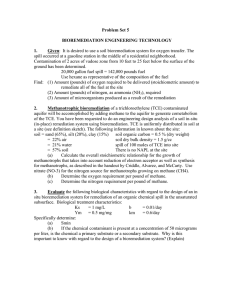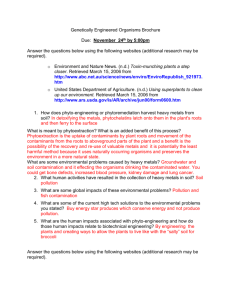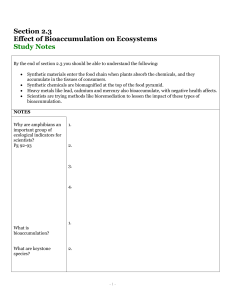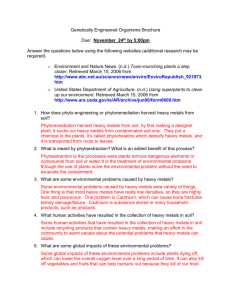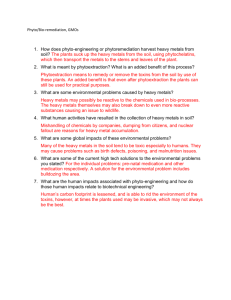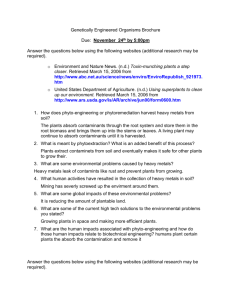Course: BIOREMEDIATION Course id: 3МЗИ1И09 Number of ECTS
advertisement
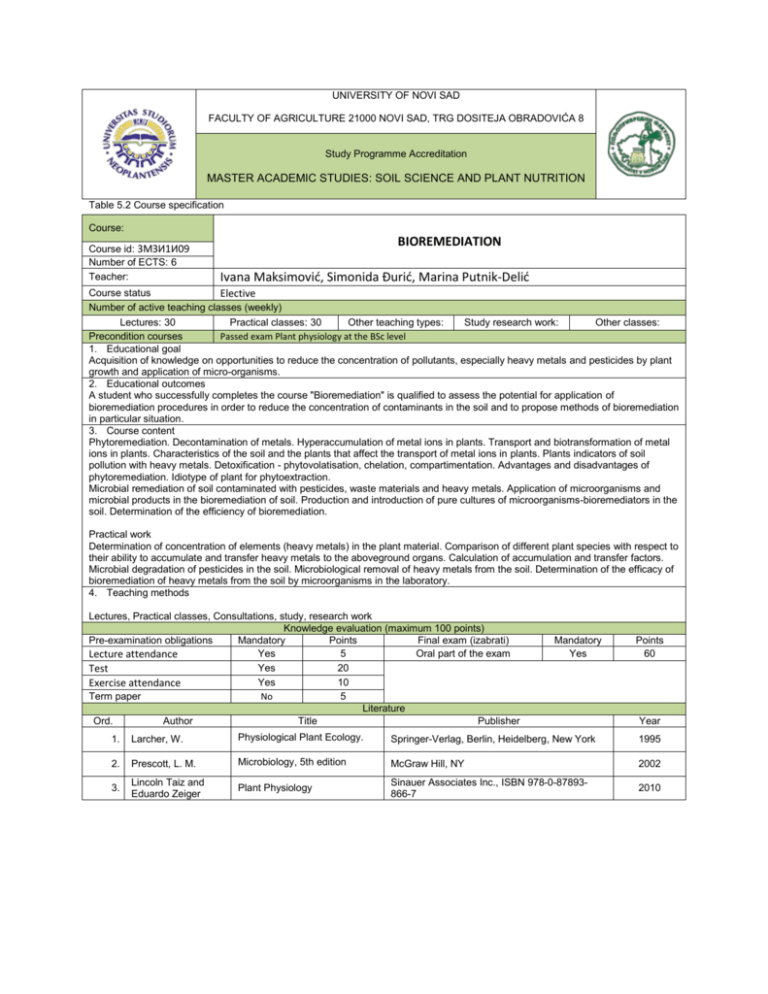
UNIVERSITY OF NOVI SAD FACULTY OF AGRICULTURE 21000 NOVI SAD, TRG DOSITEJA OBRADOVIĆA 8 Study Programme Accreditation MASTER ACADEMIC STUDIES: SOIL SCIENCE AND PLANT NUTRITION Table 5.2 Course specification Course: Course id: 3МЗИ1И09 Number of ECTS: 6 Teacher: BIOREMEDIATION Ivana Maksimović, Simonida Đurić, Marina Putnik-Delić Course status Elective Number of active teaching classes (weekly) Lectures: 30 Practical classes: 30 Other teaching types: Study research work: Other classes: Precondition courses Passed exam Plant physiology at the BSc level 1. Educational goal Acquisition of knowledge on opportunities to reduce the concentration of pollutants, especially heavy metals and pesticides by plant growth and application of micro-organisms. 2. Educational outcomes A student who successfully completes the course "Bioremediation" is qualified to assess the potential for application of bioremediation procedures in order to reduce the concentration of contaminants in the soil and to propose methods of bioremediation in particular situation. 3. Course content Phytoremediation. Decontamination of metals. Hyperaccumulation of metal ions in plants. Transport and biotransformation of metal ions in plants. Characteristics of the soil and the plants that affect the transport of metal ions in plants. Plants indicators of soil pollution with heavy metals. Detoxification - phytovolatisation, chelation, compartimentation. Advantages and disadvantages of phytoremediation. Idiotype of plant for phytoextraction. Microbial remediation of soil contaminated with pesticides, waste materials and heavy metals. Application of microorganisms and microbial products in the bioremediation of soil. Production and introduction of pure cultures of microorganisms-bioremediators in the soil. Determination of the efficiency of bioremediation. Practical work Determination of concentration of elements (heavy metals) in the plant material. Comparison of different plant species with respect to their ability to accumulate and transfer heavy metals to the aboveground organs. Calculation of accumulation and transfer factors. Microbial degradation of pesticides in the soil. Microbiological removal of heavy metals from the soil. Determination of the efficacy of bioremediation of heavy metals from the soil by microorganisms in the laboratory. 4. Teaching methods Lectures, Practical classes, Consultations, study, research work Knowledge evaluation (maximum 100 points) Pre-examination obligations Mandatory Points Final exam (izabrati) Yes 5 Oral part of the exam Lecture attendance Yes 20 Test Yes 10 Exercise attendance Term paper No 5 Literature Ord. Author Title Publisher Mandatory Yes Points 60 Year 1. Larcher, W. Physiological Plant Ecology. 2. Prescott, L. M. Microbiology, 5th edition McGraw Hill, NY 2002 3. Lincoln Taiz and Eduardo Zeiger Plant Physiology Sinauer Associates Inc., ISBN 978-0-87893866-7 2010 Springer-Verlag, Berlin, Heidelberg, New York 1995
